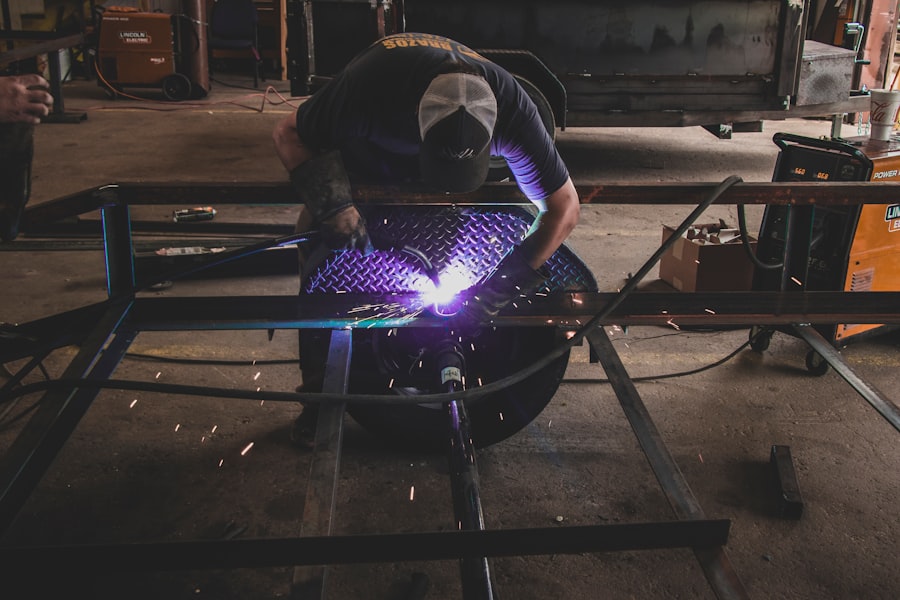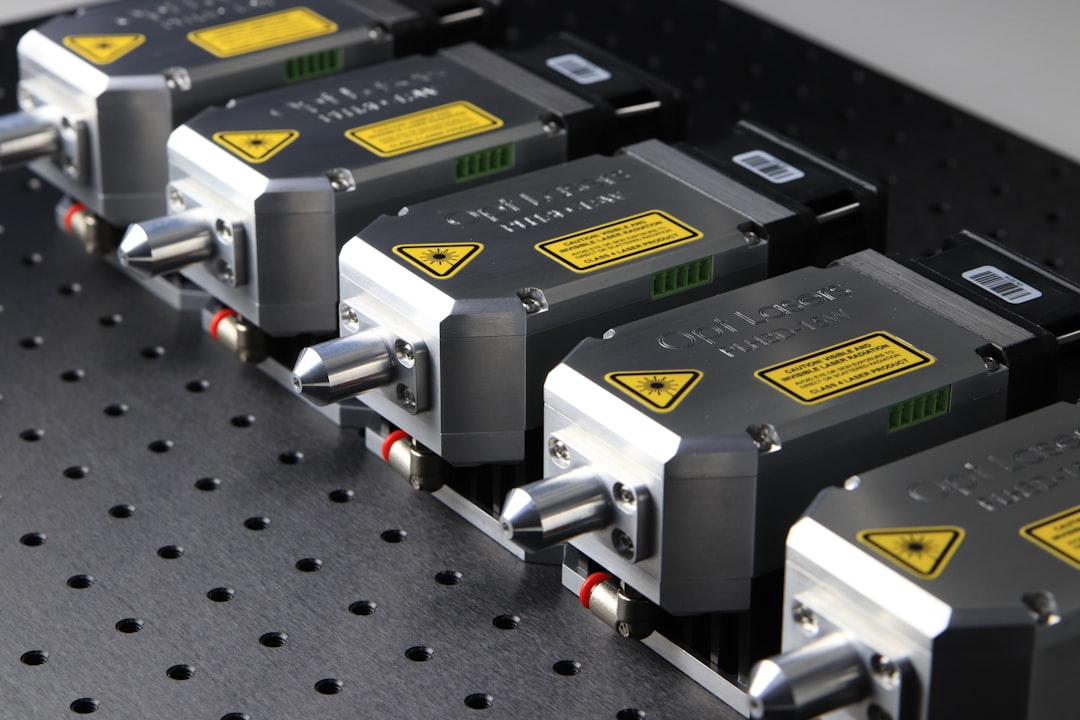Laser hair removal is a popular cosmetic procedure that utilizes concentrated beams of light to target and eliminate unwanted hair. The technology behind this method is based on the principle of selective photothermolysis, where the laser emits a specific wavelength of light that is absorbed by the pigment in the hair follicles. This absorption generates heat, which effectively damages the follicle and inhibits future hair growth.
As you consider this option, it’s essential to understand how the process works and what to expect during your treatment sessions. Typically, a series of treatments is required to achieve optimal results, as hair grows in different cycles. The laser is most effective on hair in the anagen phase, or the growth phase, which is why multiple sessions are necessary to catch all hair at the right time.
Each session usually lasts from a few minutes to an hour, depending on the size of the area being treated. Many people find that laser hair removal not only reduces hair growth significantly but also leads to smoother skin over time. As you embark on this journey, it’s crucial to have realistic expectations and understand that while many experience long-lasting results, some may require maintenance treatments in the future.
Key Takeaways
- Laser hair removal uses concentrated light to target and destroy hair follicles, leading to long-term hair reduction.
- Potential risks and side effects of laser hair removal include skin irritation, redness, and changes in skin pigmentation.
- Different skin types may require different types of lasers for effective and safe hair removal.
- Precautions before laser hair removal include avoiding sun exposure and certain medications that can increase the risk of complications.
- Choosing a qualified professional for laser hair removal is crucial for safe and effective treatment.
Potential Risks and Side Effects
While laser hair removal is generally considered safe, it is not without its potential risks and side effects. As with any medical procedure, you should be aware of what could happen during or after your treatment. Common side effects include temporary redness, swelling, and discomfort in the treated area.
These symptoms typically subside within a few hours to a few days. However, in some cases, you may experience more severe reactions such as blistering, scarring, or changes in skin pigmentation. It’s essential to discuss these possibilities with your practitioner before undergoing treatment.
Another risk to consider is the potential for eye injury if proper protective eyewear is not used during the procedure. The laser’s intense light can cause damage to your eyes, so ensuring that both you and your technician are equipped with appropriate safety gear is vital. Additionally, individuals with certain skin conditions or those who are pregnant should consult with a healthcare professional before proceeding with laser hair removal.
By being informed about these risks, you can make a more educated decision about whether this treatment is right for you.
Skin Types and Laser Hair Removal

Your skin type plays a significant role in determining the effectiveness and safety of laser hair removal. The Fitzpatrick scale categorizes skin types from I (very fair) to VI (very dark), and understanding where you fall on this scale can help you choose the right laser technology for your needs. Generally, lasers work best on individuals with light skin and dark hair because the contrast allows the laser to target the pigment in the hair more effectively.
If you have lighter hair or darker skin, you may need to explore specific types of lasers designed for your unique characteristics. For those with darker skin tones, certain lasers can minimize the risk of skin damage while still providing effective hair removal. Nd:YAG lasers, for example, are often recommended for darker skin types because they penetrate deeper into the skin without affecting the outer layers as much as other lasers might.
It’s crucial to have a thorough consultation with your practitioner to assess your skin type and determine the most suitable approach for your laser hair removal journey.
Precautions and Considerations
| Precautions and Considerations | Metrics |
|---|---|
| Hand Hygiene | Frequency of handwashing per day |
| Social Distancing | Percentage of time spent maintaining distance |
| Mask Usage | Compliance with wearing masks |
| Cleaning and Disinfection | Frequency of cleaning high-touch surfaces |
| Vaccination Status | Percentage of population vaccinated |
Before committing to laser hair removal, there are several precautions and considerations you should keep in mind. First and foremost, it’s essential to have realistic expectations about the results. While many people experience significant hair reduction, complete hair removal is not guaranteed for everyone.
Factors such as hormonal changes, genetics, and individual response to treatment can all influence outcomes. Therefore, discussing your goals with your practitioner can help set appropriate expectations. Additionally, you should avoid sun exposure before and after your treatment sessions.
Tanning can increase the risk of complications and may affect the efficacy of the laser. If you have recently tanned or have a sunburn, it’s advisable to postpone your treatment until your skin has returned to its normal state.
Choosing a Qualified Professional
Selecting a qualified professional for your laser hair removal is one of the most critical steps in ensuring a successful outcome. You should seek out practitioners who are licensed and experienced in performing laser treatments. Look for certifications from reputable organizations that indicate they have undergone specialized training in laser technology and safety protocols.
Reading reviews and testimonials from previous clients can also provide insight into their expertise and patient satisfaction. During your initial consultation, take note of how comfortable you feel with the practitioner. They should be willing to answer all your questions and address any concerns you may have about the procedure.
A good practitioner will also conduct a thorough assessment of your skin type and hair characteristics before recommending a treatment plan tailored specifically for you. Trusting your provider is essential for a positive experience, so don’t hesitate to seek out someone who makes you feel confident in their abilities.
Aftercare and Maintenance

Aftercare following laser hair removal is crucial for achieving optimal results and minimizing side effects. Immediately after your treatment, you may notice some redness or swelling in the treated area; applying a cool compress can help alleviate discomfort. It’s important to avoid hot showers, saunas, or strenuous exercise for at least 24 hours post-treatment to prevent irritation.
Additionally, keeping the area clean and moisturized will aid in healing and reduce the risk of complications. As part of your aftercare routine, you should also be mindful of sun exposure. Protecting your skin from UV rays is essential; using a broad-spectrum sunscreen with an SPF of 30 or higher will help shield your skin from potential damage and pigmentation changes.
Your practitioner may recommend specific products or routines tailored to your skin type to enhance healing and maintain results. Following these aftercare guidelines diligently will contribute significantly to your overall satisfaction with the procedure.
Long-term Effects of Laser Hair Removal
The long-term effects of laser hair removal can vary from person to person but generally include significant reductions in hair growth over time. Many individuals report that after completing their treatment sessions, they experience smoother skin with minimal regrowth. However, it’s important to note that some may still see fine or lighter hairs return after several months or years; this is often referred to as “hair shedding.” Maintenance sessions may be necessary for those who wish to keep their results looking pristine.
In addition to hair reduction, many people find that their skin texture improves following laser treatments. The process can stimulate collagen production, leading to smoother and firmer skin over time. However, individual experiences will differ based on factors such as skin type, age, and overall health.
By maintaining realistic expectations about long-term results and staying committed to any recommended follow-up treatments, you can enjoy lasting benefits from your laser hair removal journey.
Alternatives to Laser Hair Removal
If laser hair removal doesn’t seem like the right fit for you, there are several alternatives worth considering. Traditional methods such as shaving, waxing, or using depilatory creams are widely available options that can provide temporary relief from unwanted hair. While these methods may require more frequent upkeep compared to laser treatments, they can be effective for those looking for immediate results without committing to a more permanent solution.
Another alternative gaining popularity is electrolysis, which involves using an electric current to destroy individual hair follicles. This method is FDA-approved for permanent hair removal and can be suitable for all skin types and hair colors. However, electrolysis can be time-consuming since each follicle must be treated individually; thus, it may not be ideal for larger areas of unwanted hair.
Ultimately, exploring various options will help you find the best solution tailored to your needs and preferences as you navigate your journey toward smoother skin.
If you are concerned about the potential damage that laser hair removal may cause to your skin, you may find this article helpful. It discusses how to customize your laser hair removal treatment to minimize any potential risks and ensure the best results. By personalizing your treatment plan based on your skin type and hair color, you can reduce the likelihood of experiencing any adverse effects.
FAQs
What is laser hair removal?
Laser hair removal is a cosmetic procedure that uses a concentrated beam of light (laser) to remove unwanted hair. The light is absorbed by the pigment in the hair follicles, which damages the follicle and inhibits future hair growth.
Does laser hair removal damage the skin?
Laser hair removal can cause temporary redness, swelling, and discomfort, but when performed by a qualified professional, it should not cause permanent damage to the skin. However, there is a risk of potential side effects such as burns, blisters, and changes in skin pigmentation if the procedure is not performed correctly.
How can I minimize the risk of skin damage from laser hair removal?
To minimize the risk of skin damage from laser hair removal, it is important to choose a reputable and experienced provider, follow pre- and post-treatment care instructions, and disclose any medical conditions or medications that may affect the skin’s response to the treatment.
Who is a good candidate for laser hair removal?
Good candidates for laser hair removal are individuals with lighter skin and darker hair, as the contrast makes it easier for the laser to target the hair follicles. However, advancements in technology have made laser hair removal accessible to a wider range of skin and hair types.
Are there any long-term effects of laser hair removal on the skin?
When performed correctly, laser hair removal should not have long-term negative effects on the skin. In fact, some people may experience smoother and clearer skin as a result of the treatment. It is important to follow proper aftercare and maintenance to ensure the best results.




